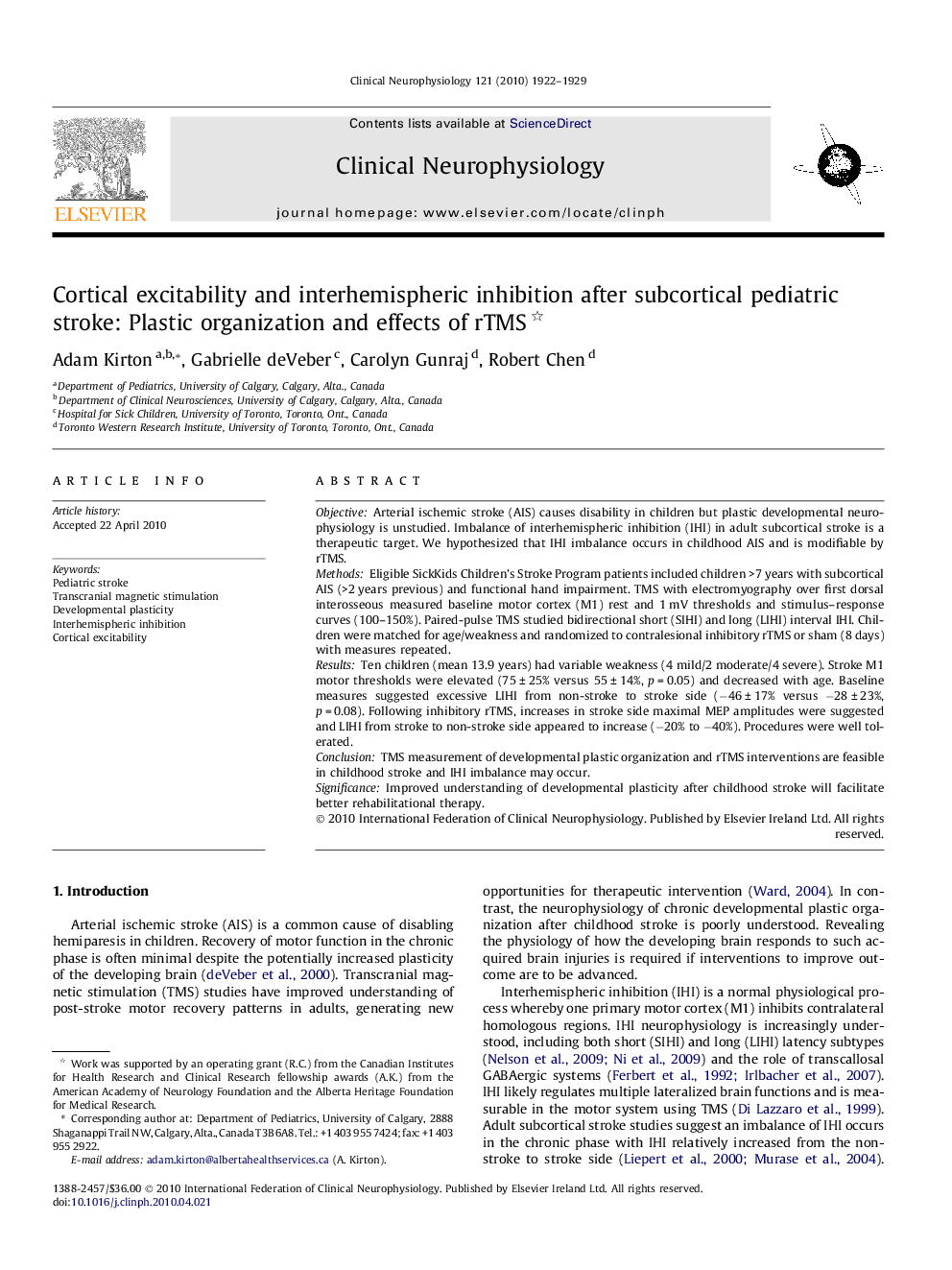| Article ID | Journal | Published Year | Pages | File Type |
|---|---|---|---|---|
| 3044652 | Clinical Neurophysiology | 2010 | 8 Pages |
ObjectiveArterial ischemic stroke (AIS) causes disability in children but plastic developmental neurophysiology is unstudied. Imbalance of interhemispheric inhibition (IHI) in adult subcortical stroke is a therapeutic target. We hypothesized that IHI imbalance occurs in childhood AIS and is modifiable by rTMS.MethodsEligible SickKids Children’s Stroke Program patients included children >7 years with subcortical AIS (>2 years previous) and functional hand impairment. TMS with electromyography over first dorsal interosseous measured baseline motor cortex (M1) rest and 1 mV thresholds and stimulus–response curves (100–150%). Paired-pulse TMS studied bidirectional short (SIHI) and long (LIHI) interval IHI. Children were matched for age/weakness and randomized to contralesional inhibitory rTMS or sham (8 days) with measures repeated.ResultsTen children (mean 13.9 years) had variable weakness (4 mild/2 moderate/4 severe). Stroke M1 motor thresholds were elevated (75 ± 25% versus 55 ± 14%, p = 0.05) and decreased with age. Baseline measures suggested excessive LIHI from non-stroke to stroke side (−46 ± 17% versus −28 ± 23%, p = 0.08). Following inhibitory rTMS, increases in stroke side maximal MEP amplitudes were suggested and LIHI from stroke to non-stroke side appeared to increase (−20% to −40%). Procedures were well tolerated.ConclusionTMS measurement of developmental plastic organization and rTMS interventions are feasible in childhood stroke and IHI imbalance may occur.SignificanceImproved understanding of developmental plasticity after childhood stroke will facilitate better rehabilitational therapy.
